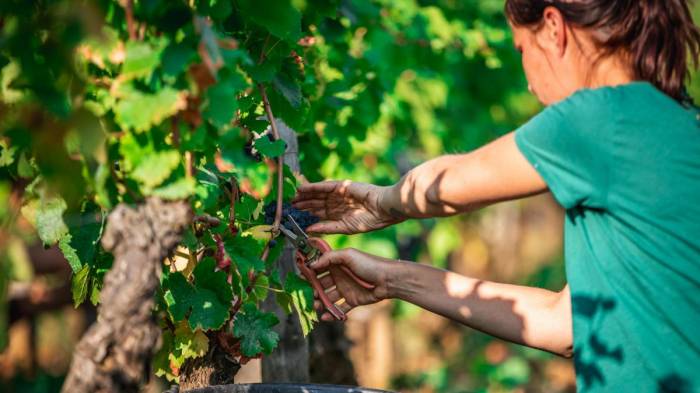
French wine production in 2025 is expected to reach 36 million hectoliters, according to estimates released by the French Ministry of Agriculture’s statistics service on October 1. This figure is 16 percent below the average of the past five years, reflecting another difficult year for the country’s wine sector. The main causes are the heatwave and drought that struck in August, which followed a 2024 season already marked by adverse weather, including heavy rain, drought, and late frost.
The ministry reported that this year’s harvest, now nearly complete, confirms the negative impact of the August heatwave on grape yields across most wine regions. The extreme heat and lack of rain accelerated grape ripening but prevented the berries from growing to their usual size, resulting in smaller grapes with less juice. September rains arrived too late to reverse the damage.
Dominique Furlan, a winemaker in Entre-Deux-Mers in the Gironde region, described the situation as disappointing. “We expected a normal year, but then the heatwave hit and affected yields. The grapes lost volume,” he said. Furlan noted that as the harvest progressed, it became clear that yields were dropping, though he emphasized that the quality of the grapes remained good.
The impact of the weather has not been uniform across France. The ministry noted that only wines with protected designation of origin (AOP) are expected to see a slight increase in production—about 5 percent higher than in 2024—thanks to gains in Champagne, Burgundy, the Loire Valley, Corsica, and parts of southeastern France. However, even this category remains 11 percent below the five-year average from 2020 to 2024.
In Bordeaux, early September rains failed to make up for earlier losses. Production is expected to be slightly lower than last year’s already reduced level and 17 percent below the five-year average. Christophe Chateau, communications director for Bordeaux’s wine trade council, said that a very dry summer produced small, concentrated berries. He added that two factors are driving down volumes: a smaller harvest and a reduction of 10,000 hectares under cultivation compared to last year due to state-subsidized vine removal programs.
These government-supported campaigns to uproot vines are a response to ongoing challenges in the sector, including declining wine consumption. In Bordeaux alone, AOC vineyard area has dropped from 103,000 hectares in 2023 to 85,000 hectares in 2025.
Languedoc-Roussillon also saw production limited by heat and drought, followed by rain that encouraged mildew. With more than 10,000 hectares uprooted, production there is down 9 percent from last year and 19 percent below the five-year average.
In Alsace, growers had to sort grapes carefully due to health issues late in the season, leading to a 9 percent drop in production compared to last year. Burgundy’s situation varies by department: Yonne saw high yields, while Côte-d’Or was hit hard by the heatwave. Overall, Burgundy’s harvest is expected to be 45 percent higher than in 2024, when mildew took a heavy toll.
Beaujolais faces its lowest yield in at least 35 years due to a combination of heatwave, mildew, poor fruit set, and hail. Production there is expected to fall by 32 percent year-on-year.
In southeastern France, production is similar to last year but still 10 percent below the five-year average, with Ardèche, Vaucluse, and Bouches-du-Rhône particularly affected by heat.
Champagne, Corsica, Savoie, and the Loire Valley are among the few regions where production is expected to exceed 2024 levels, despite challenges from the heatwave.
The overall picture for French wine in 2025 is one of lower volumes and significant regional disparities. The sector continues to face pressure from climate events and structural changes in consumption and vineyard management.

Dining and Cooking